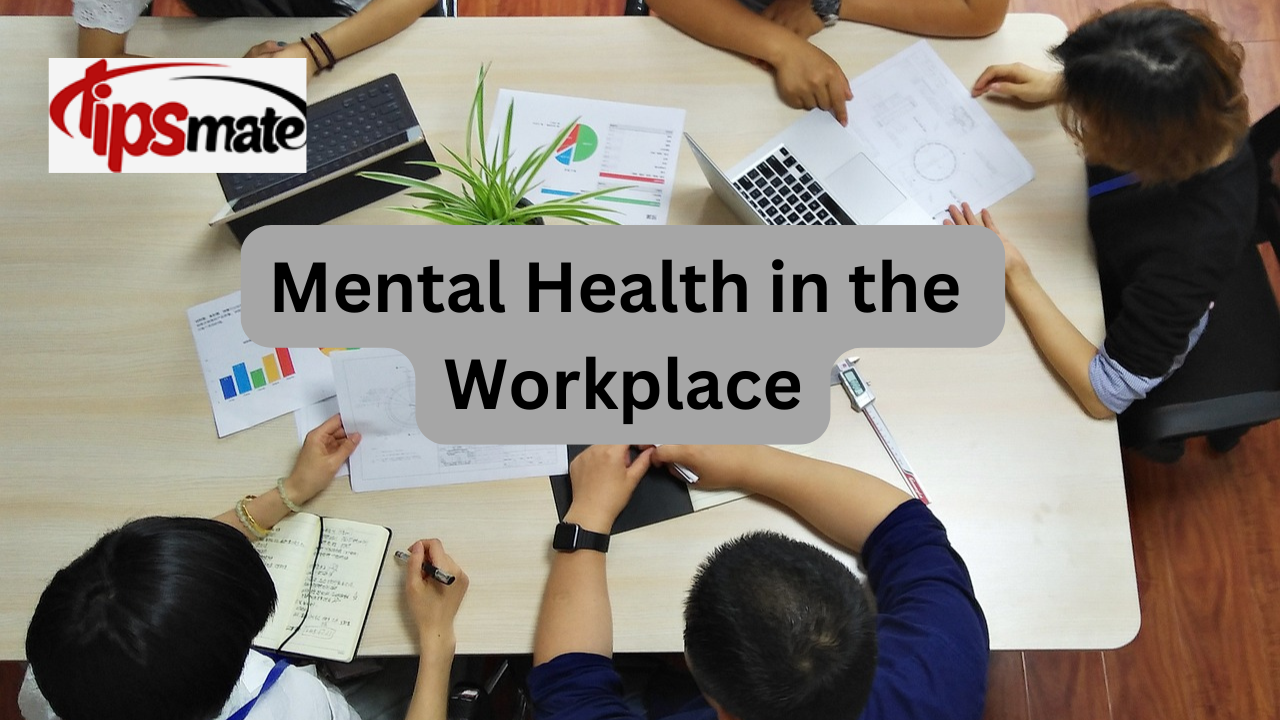Mental Health in the Workplace
Mental health is crucial to overall well-being, yet it is easily neglected in the workplace. As work conditions become increasingly challenging and related, employees face rising levels of burnout, tension, and anxiety. Recent studies reveal that many workers report mental health challenges originating from work-related elements such as extended hours, serious workloads, and high expectations.
The consequences of poor mental health extend beyond personal struggles—they impact team cohesion, productivity, and ultimately, the company’s success. Many companies are realizing the importance of supporting mental health in the workplace. Concentrating on workers' well-being advantages not only the individuals but also supports the organization, leading to higher productivity, decreased desertion, and a more cheerful work culture.
A. The Current State of Workplace Mental Health
Mental health in the workplace has become a crucial situation nowadays, as workers face rising levels of tension and mental health challenges. According to different studies, a meaningful proportion of workers participate in health disorders like depression, stress, and burnout, often caused by workplace elements. These challenges not only impact people’s well-being but also have a deep impact on managerial productivity and regard in society.
1) Common Mental Health Issues Among Workers
- Anxiety and Depression: Due to a lack of help and high anticipation, there is an expansion in feelings of lack and despair, which are often displayed as stress or depression.
- Stress: Workplace stress is driven by many problems like closed deadlines, more workloads, and appealing job roles.
- Burnout: Long exposure to stress without sufficient recovery time shows burnout, a state of physical, inspirational, and mental deficiency of energy.
2) Main Causes of Workplace Mental Health Struggles
- Heavy Workloads and High Pressure: Many workers report feeling overwhelmed by impractical expectations and an inability to disconnect from work.
- Lack of Work-Life Balance: The unfocusing boundaries between personal life and work, especially in remote or hybrid work setups, has contributed to an increase in stress levels.
- Insufficient Support Systems: Lack of empathy from management, not taking good care of mental health, and stigmatization of mental health issues further compound the problem.
- Toxic Workplace Cultures: Environments that promote competition, discrimination, or bullying can severely affect mental well-being.
3) Impact on Individuals and Organizations
- On Workers: Mental health challenges can show decreased job fulfillment, diminished stimulation, and increased desertion. Workers dealing with such issues may feel liberated from their parts and separated from coworkers, further affecting their overall health.
- On Organizations: Poor worker mental health outcomes in lower productivity, increased team turnover, and more significant healthcare costs.
- Workplaces that overlook mental health may also find it more difficult to draw and keep qualified workers, as many now respect well-being and supporting environments.
B. Key Factors Impacting Cognitive Health in the Workplace
Many elements affect mental health in the workplace, shaping workers' experiences and well-being. Understanding these factors is important to creating a verifying circumstances to promote mind healthiness.
a) Workload and Job Demands
- Enormous workloads, tight deadlines, and high anticipations of ideal can create high levels of anxiety.
- A lack of resources or help to complete the needs of the community often leads to feelings of crush and burnout.
b) Work-Life Balance
- Stress and tiredness are increased by problems in balancing skilled life duties and obligations with private life.
- Long hours, after-work emails, and remote work challenges combine the borders between work and private life
c) Workplace Culture
- A harmful work environment marked by discrimination, hearsay, or harassment can negatively impact cognitive health.
- A civilization that prevents workers from openly sharing or stigmatizing mental health problems can stop workers from seeking help.
d) Leadership and Management Style
- Managers who are unsupportive and extra-demanding with high anticipations can contribute to worker discontent and stress.
- While, understanding and approachable managers can help create cheerful, comfortable, and healthy work requirements.
e) Job Safety and Economic Concerns
- Anxiety and its effect on cognitive health is forced by hesitation about employment stability or economic stress.
- Pay cuts, release, or lack of career improvement opportunities add pressure to the employees.
f) Social Support and Workplace Connections
- Positive connections with coworkers and a feeling of good company reduce anxiety and boost job satisfaction.
- Contrarily, solitariness or disputes among crew members can create emotions of anxiety and loneliness.
g) Physical Work Conditions
- Stress levels are also raised by an awkward or distracting work atmosphere, such as wrong light effects, noise, or lack of ergonomic furniture.
- Providing reserved spaces, leisure areas, or fitness rooms can help mitigate these stressors.
By managing these factors, associations can foster a corroborating environment that prioritizes mental health and well-being, resulting in a more motivated, committed, and effective workforce.
C. Challenges in Enforcing Mental Health Programs
Supporting mental health in the workplace is essential, but executing sufficient programs often causes significant challenges. Identifying and overcoming these obstacles is important for creating a sufferable and supportive cognitive health strategy.
1. Stigma Near Mental Health
- Mental health challenges stay stigmatized in many workplaces, discouraging workers from seeking help or engaging in known programs.
- Workers often fear being considered, discriminated against, or meeting negative repercussions for recognizing their need for help.
2. Limited Understanding and Education
- Limited awareness of mental health and its impact on workplace productivity can lead to insufficient support from the administration.
- Both leaders and employees may struggle to recognize signs of mental health challenges or understand how to react effectively.
3. Low Resources
- Smaller communities or those with restricted budgets may find it demanding to dedicate help to complete mental health programs.
- A lack of entrance to mental health specialists, tools, or workout programs can reduce the efficacy of these initiatives.
4. Resistance to Change
- Workers and leaders might oppose new schedules if they view them as unnecessary or too time-consuming.
- A workplace civilization that prioritizes productivity over worker well-being can create obstacles to program adoption.
5. Lack of Leadership Support
- Effective mental health programs rely on strong loyalty from top administration, but some leaders may underestimate their significance.
- Without visual and active help from leadership, efforts to advance mental health initiatives may stumble to succeed.
6. Measuring Effectiveness
- Evaluating the impact of mental health programs can be challenging due to the individual and impressionistic nature of mental well-being.
- Many companies may not have the necessary tools or expertise to effectively measure the success of their initiatives.
7. Balancing Privacy and Support
- Workers need to suspend respecting employee confidentiality by offering useful mental health support.
- Employees may be hesitant to engage in schedules if they worry their private information might be revealed or misused.
8. Adapting Programs to Diverse Needs
- A standardized approach to mental health schedules may fail to address the various challenges workers face.
- Effective enterprises should account for artistic differences, changing job roles, and individual preferences.
D. Addressing These Challenges
To overcome these challenges, a thorough plan of action is needed, which involves educating employees to break down disgrace, encouraging leadership support, assigning specific resources, and constantly assessing programs. By tackling these barriers, organizations can create a work environment that truly prioritizes and takes good care of mental health.
In Conclusion, Mental health in the workplace is a critical issue that can not be ignored. Creating an environment where employees feel free, supported, valued, and mentally well is an ethical obligation and a key to an organization's success. By encouraging clear communication, offering mental health resources, and promoting a culture of respect and inclusivity, organizations can help their teams reach their full potential while reducing stress, burnout, absenteeism, and turnover.
A workplace that prioritizes mental health is one where employees flourish—both in their careers and their personal lives. Investing in mental health not only strengthens the workforce but also builds a reputation for being an organization that genuinely cares about its people.
















